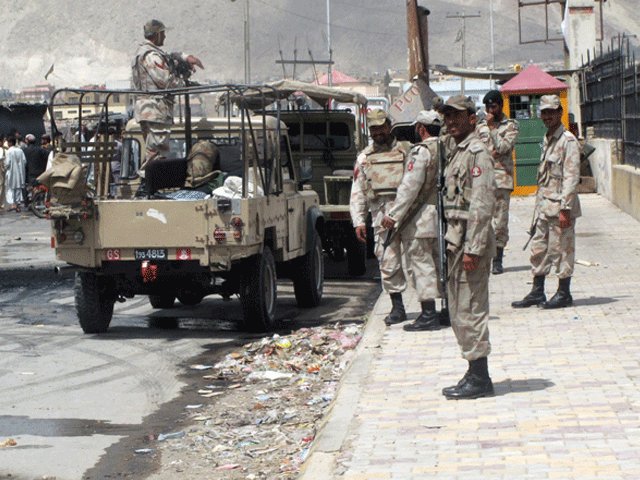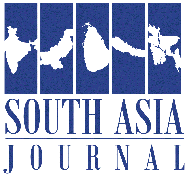 The recent escalation in militant activities across Balochistan marks a dangerous inflection point in Pakistan’s enduring struggle to maintain sovereignty and peace in one of its most strategically vital provinces. The resurgence of attacks—ranging from ambushes on security convoys to the seizure of checkpoints and establishment of militant-controlled blockades—underscores the growing boldness of groups like the Baloch Liberation Army (BLA). These developments are not isolated acts of rebellion; they are part of a calculated insurgency campaign aimed at undermining Pakistan’s internal cohesion and obstructing its economic future.
The recent escalation in militant activities across Balochistan marks a dangerous inflection point in Pakistan’s enduring struggle to maintain sovereignty and peace in one of its most strategically vital provinces. The resurgence of attacks—ranging from ambushes on security convoys to the seizure of checkpoints and establishment of militant-controlled blockades—underscores the growing boldness of groups like the Baloch Liberation Army (BLA). These developments are not isolated acts of rebellion; they are part of a calculated insurgency campaign aimed at undermining Pakistan’s internal cohesion and obstructing its economic future.
Balochistan’s geopolitical and geo-economic importance cannot be overstated. It houses vital mineral resources, provides access to the Arabian Sea through Gwadar, and is the linchpin of the multibillion-dollar China-Pakistan Economic Corridor (CPEC). The state’s inability to enforce control over the region directly threatens national security and economic development. Therefore, containing and ultimately dismantling the insurgency is not just a law-and-order issue—it is a strategic imperative.
Recent events illustrate the sophistication and coordination of the militant campaign. Reports suggest that the BLA has carried out over 70 attacks in 51 locations as part of its so-called “Operation Herof.” These are not haphazard acts of violence; they are carefully planned operations targeting high-value assets, military logistics, and civilian confidence. Simultaneously, the use of information warfare—amplified through encrypted messaging platforms and propaganda outlets—has intensified, with militants seeking to project strength and legitimacy while sowing distrust between the state and local populations. This insurgency must be seen through the lens of hybrid warfare. It combines guerrilla tactics with psychological operations, targeting both the state’s physical presence and its symbolic authority. In such a scenario, Pakistan must adopt a whole-of-government approach rooted in counterinsurgency (COIN) doctrine, emphasizing both kinetic and non-kinetic responses.
At the operational level, the state’s security forces must prioritize precision intelligence and coordinated action. Current military operations in Khuzdar, Surab, and adjacent mountainous zones must not be episodic or reactionary. They must evolve into sustained counterinsurgency campaigns that degrade militant networks, deny them freedom of movement, and dismantle their logistical chains. Moreover, local civilian administrations should be integrated into these efforts to ensure that military operations are followed by stabilization and development activities.
Pakistan’s intelligence community must also elevate its game. The infiltration of militant ideology into urban centers, coupled with growing transnational linkages, demands enhanced surveillance, cyber-monitoring, and human intelligence (HUMINT) capabilities. Militants are no longer confined to rugged terrain; they are adapting, exploiting weak governance, and leveraging digital tools to shape perceptions and recruit foot soldiers. A centralized intelligence-sharing mechanism involving the ISI, MI, IB, and Levies is essential to ensure seamless coordination.
Yet while force may suppress insurgents, it will not resolve the conflict. Political and economic grievances have long fueled Baloch discontent, providing a fertile ground for secessionist narratives. If the state is to truly neutralize the insurgency, it must couple hard power with developmental inclusion. The people of Balochistan need more than security checkpoints—they need schools, hospitals, roads, and above all, a stake in the federation.
Efforts must focus on accelerating development in deprived areas through transparent and accountable mechanisms. Local communities must be integrated into the design and implementation of development projects, especially those related to CPEC. Employment opportunities for Baloch youth in infrastructure, education, and law enforcement can serve as a powerful counter-narrative to the call for armed rebellion.
Furthermore, political dialogue must not be seen as a concession to militants but as a statecraft tool. Engaging Baloch nationalist leaders who are outside the militant framework can help address the legitimate grievances of the people while isolating those who resort to violence. Provincial autonomy, equitable resource distribution, and respect for local culture and identity must be cornerstones of this engagement.
On the diplomatic front, Pakistan must also expose the external dimensions of the insurgency. It is no secret that foreign intelligence agencies have provided ideological, financial, and operational support to Baloch militant groups. India’s links to insurgents have been cited in multiple dossiers, and the arrest of Kulbhushan Jadhav offered undeniable proof of external interference. Islamabad must continue to raise the issue in international forums, demanding accountability and pushing for the designation of militant groups like the BLA as terrorist entities.
Ultimately, Balochistan’s insurgency is not insurmountable, but its complexity demands clarity of purpose and consistency of effort. The state must not waver in its resolve to dismantle militant networks, nor should it ignore the foundational issues that perpetuate unrest. Only through a dual-track approach—force where necessary, reform where possible—can Pakistan hope to reclaim the periphery and transform Balochistan from a theater of conflict into a frontier of opportunity.
